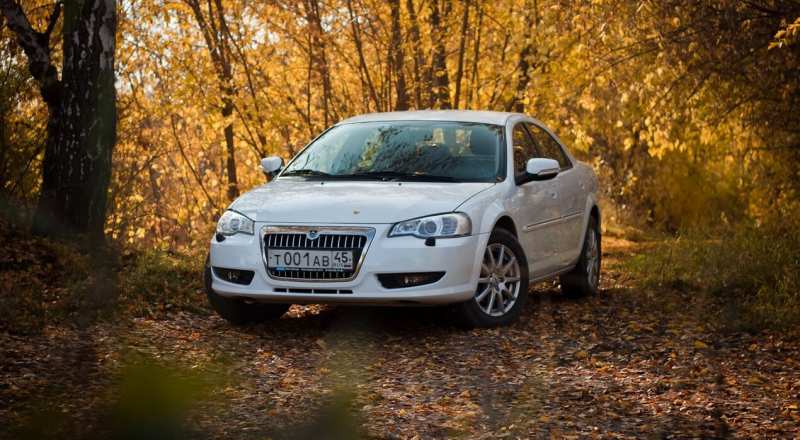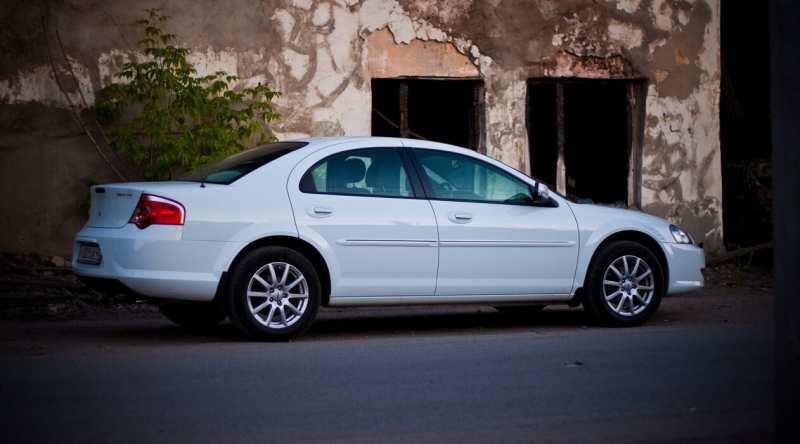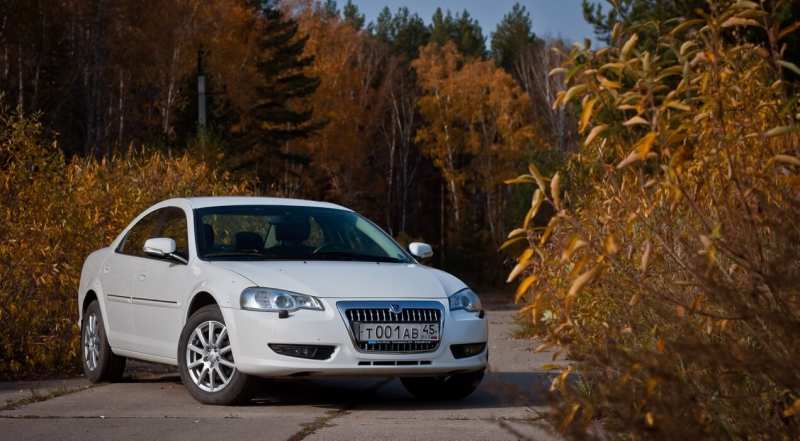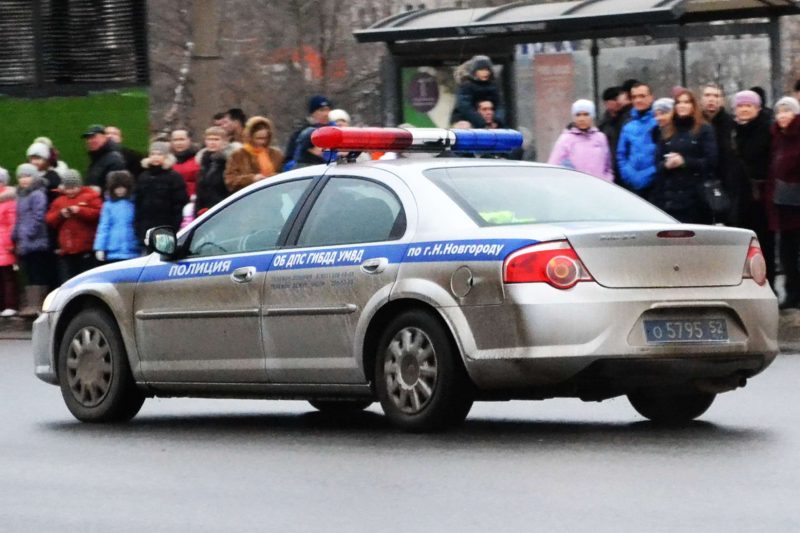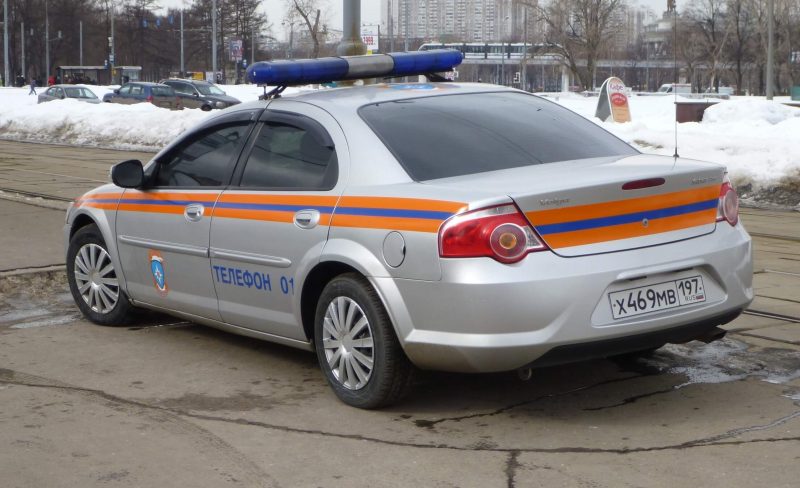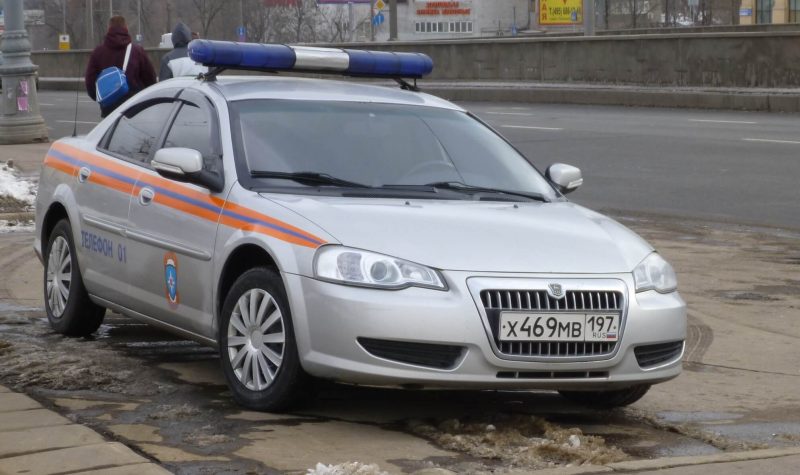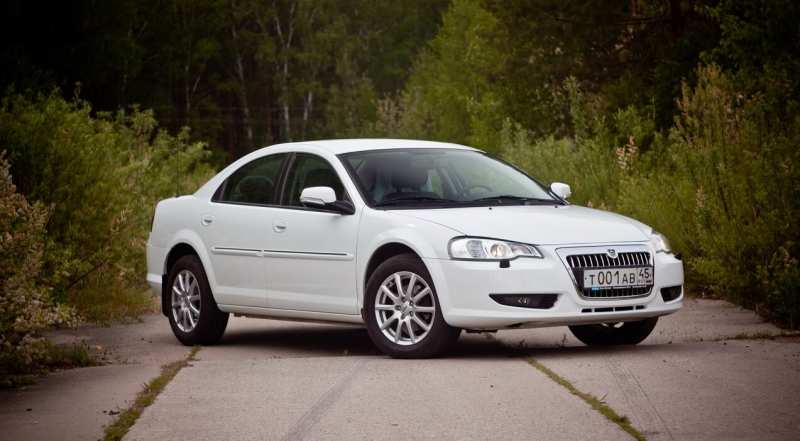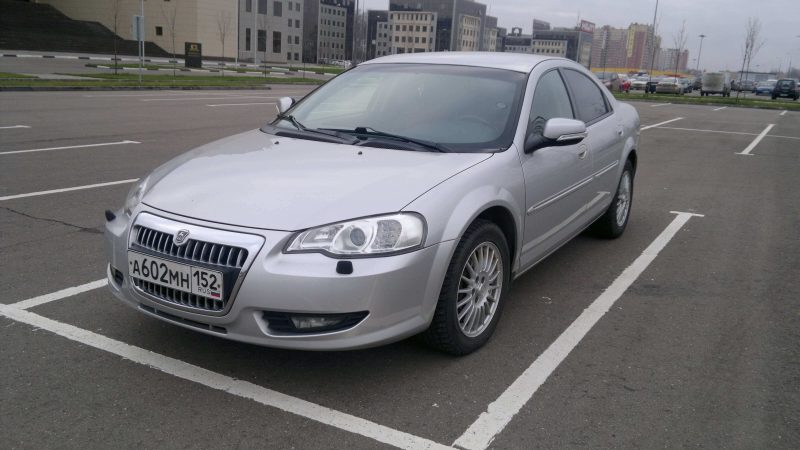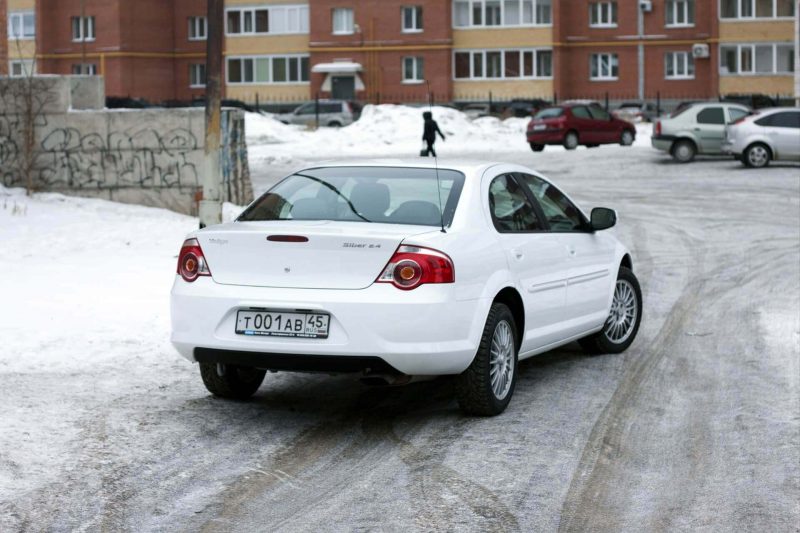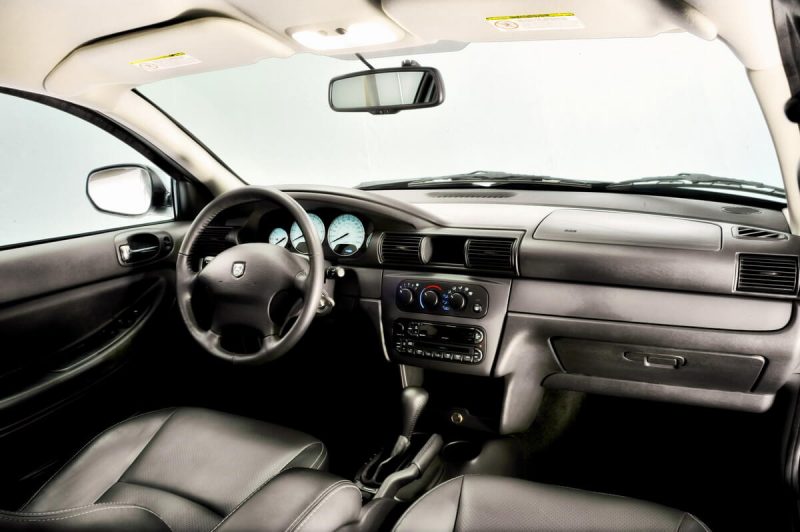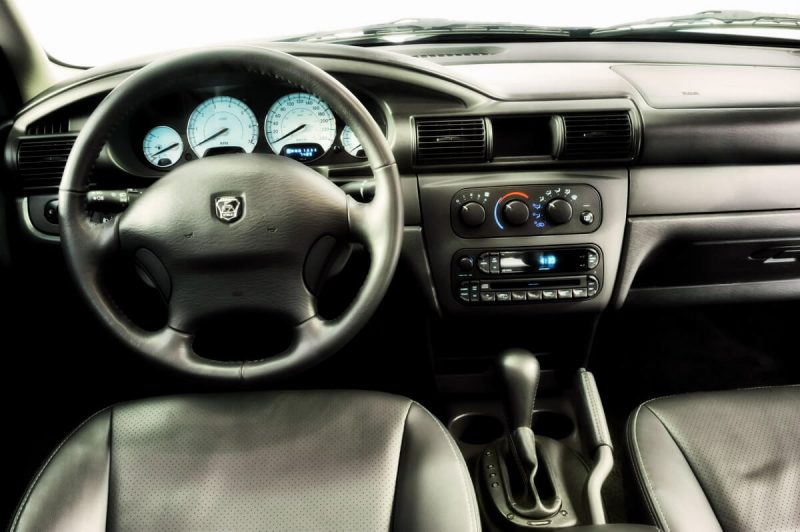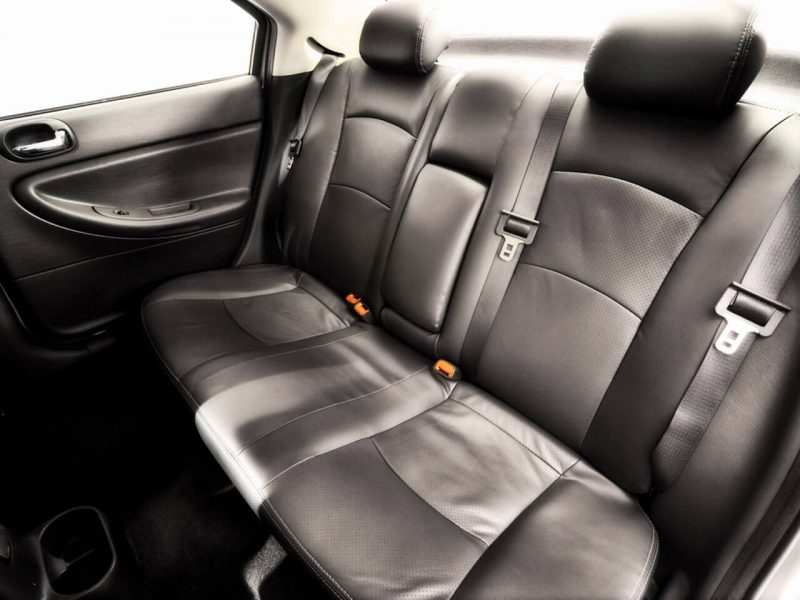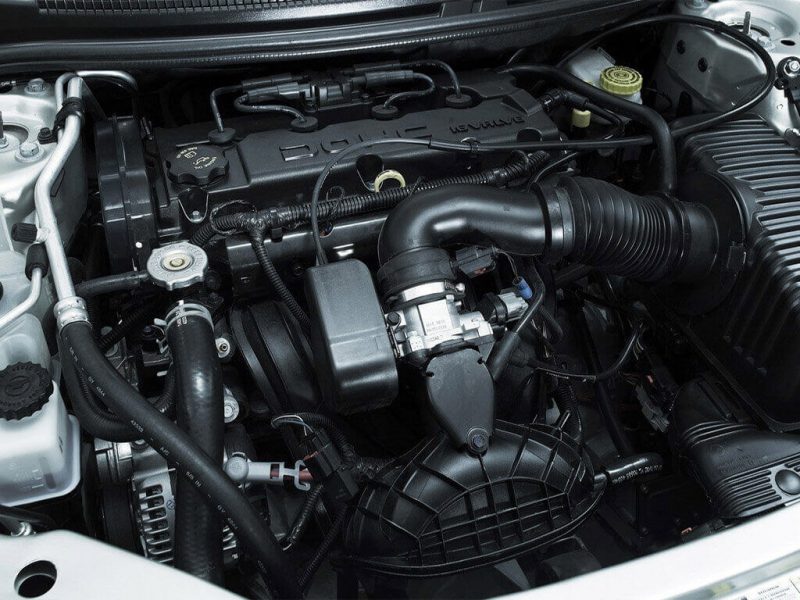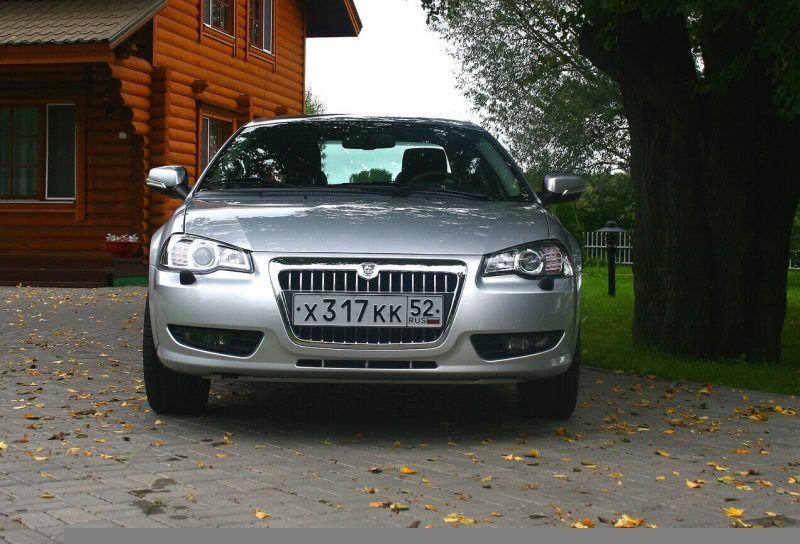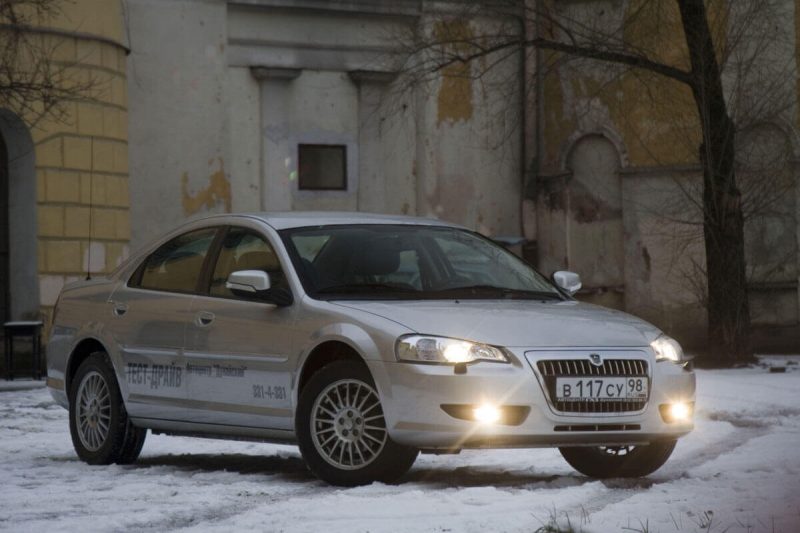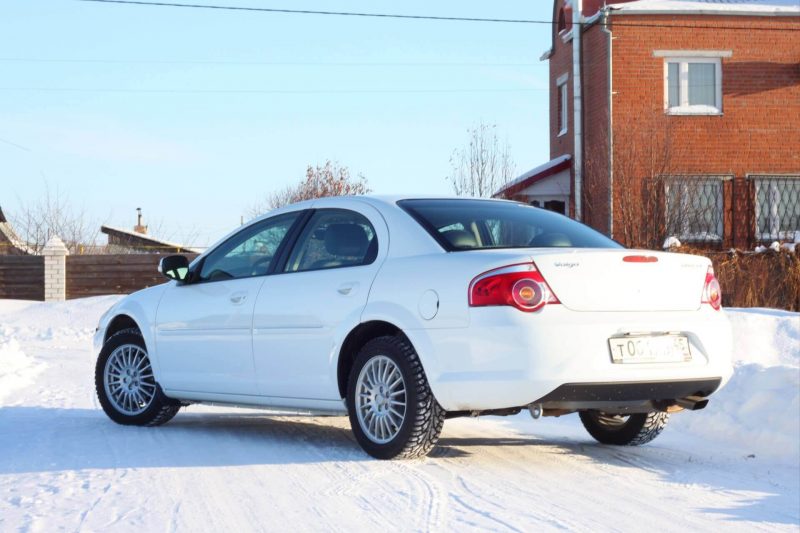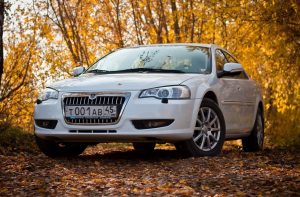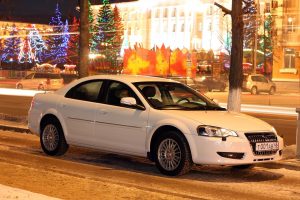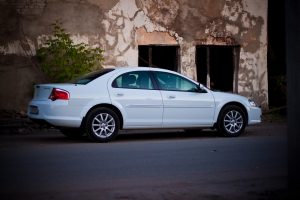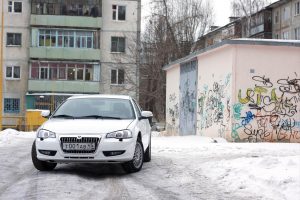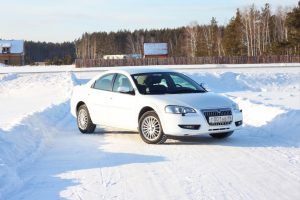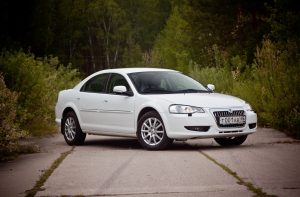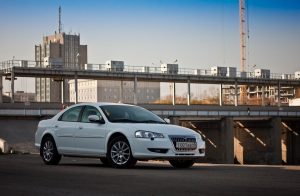Volga Siber
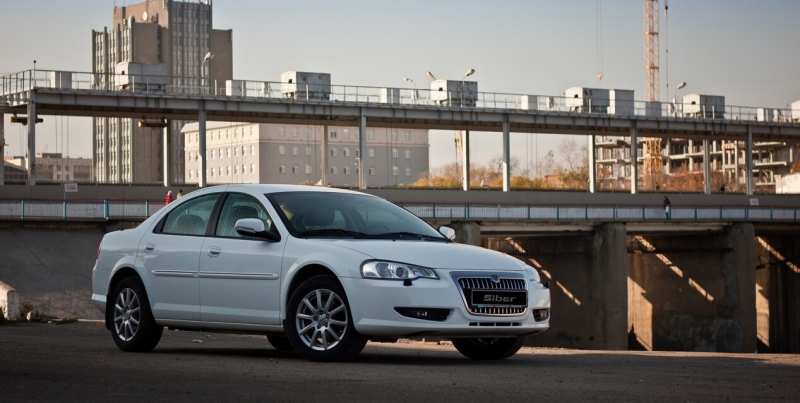
Volga Siber is a domestic medium sized sedan produced between 2008 and 2010. It was presented by the Russian company GAZ Group at the InterAuto-2007 exhibition in Moscow on August 29, 2007. Although the model was called GAZ Siber during the demonstration, it was later renamed Volga Siber. The whole model range is GAZ.
- History of creation
- More plant problems
- Vehicle base
- The rest of the sedan’s life
- Attempts to help with implementation
- Disposal program
- Exterior
- Interior
- Salon features
- Specifications
- Powertrain
- Transmission
- Suspension
- Steerability
- Brake system
- Crash test
- Price and equipment
- The pros and cons
- We sum up
- Volga Syber photo
- Test drive
- Video overview
History of creation
During the nineties, the design staff of the automobile plant in the city of Gorky was already working on a new Volga, a car that would have replaced a car that had already outlived itself and was driving its own pedigree from GAZ-24, which was designed in the mid-1960s. It is a pity, however, that neither the “nomenclature” GAZ-3105, nor the cars of the Volga (3103, 3104 and 3111) designed during the post-Soviet period, could not become models that would have been produced in series.
Even the fact that several hundred 3111 models were produced did not save the situation, and multiple restylings, along with upgrades for the already old Volga, could not make it modern. Even the presence of a sixteen-valve power pack did not affect the situation. The hingeless suspension of the “barges” remained an archaism of its years, as the appearance and ergonomic component, despite the model, met the fashion of the twentieth century. And in fact, a new century has already come.
After Oleg Deripaska’s company became the owner of the plant in 2000, or more precisely, the controlling stake in GAZ OAO, small innovations began to take hold. The owner was not happy with the current situation, which is why GAZ carried out a large-scale restructuring, during which the whole list of projects and directions was curtailed.
The main goal of Oleg Deripaska’s company was to turn the unprofitable enterprise into a profitable production facility. The situation repeated itself a little bit, the Gorky Automobile Plant should survive with the help of commercial equipment, which was the main emphasis.
More plant problems
It is clear that the Cars division managed to improve the old Volga in the mid-2000s, but it was only competitive with foreign ones in terms of linear dimensions. The Russian vehicle was losing ground in terms of comfort, ergonomics, reliability and safety. Everybody understood that a radically new car was required, which did not have common units with the previous base.
Since GAZ already had experience in purchasing foreign companies in order to develop its own model range (the English company LDV Group), the company decided not to puzzle and act according to the same scheme with passenger cars.
Therefore, the owners of GAZ decided not only to purchase a license for the production of a foreign car, but also, even, to buy an assembly plant Sterling Heights Assembly for $150,000,000, which belonged to the concern Daimler Chrysler.
This plant produced various machines such as Dodge, Chrysler and Plymouth, and our Volga had “twin brothers” Chrysler Sebring and Dodge Stratus. The idea can not be called a bad one, because instead of the already morally backward Volga, the Nizhny Novgorod plant planned to produce quite modern medium sized machines, which by classification and purpose were analogous to the Volga.
It is also very important that the American car, if you do not pay attention to the layout with front drive, in the overall concept was closer to the Gorky Automobile Plant, rather than similar cars from Asia or Europe.
Vehicle base
It should not be forgotten that the Russian company had overseas roots – the debut products were represented by Ford A and AA vehicles. For the basis of the machine, the length of which exceeded 4.8 meters, decided to take the front-drive platform Chrysler JR41. The model can hardly be called old, because Sebring and Stratus of this generation were launched on the conveyor in 2000, and the version for Europe was shown a year later.
For the Russian version they decided to make an increased ground clearance, because the quality of roads here, however, as always, is at a low level. What else was needed? Everybody was sure that this was the ideal variant of the vehicle. And the company itself set its own goals.
In the first year of production they planned to produce about 10,000 sedans, and in 2009 – 45,000. In the future, they planned to produce a good number of 65,000 units at the plant. But the designed capacity of the enterprise itself was as much as 100,000 copies!
The rest of the sedan’s life
Sadly, the car entered the Russian market at the very moment when the financial crisis broke out in 2008. March was marked by the release of a pilot batch, and in the summer began serial production of Sibers. August allowed to start the long-awaited delivery of cars, and a couple of months later, in October, the sedan could be freely purchased by anyone who wanted to (or rather, who had the money).
Following the fall in the cost of oil and the fact that the country had a large foreign debt, in 2008 the Russian Federation experienced a financial and economic crisis. Banks began to suffer heavy losses and very quickly removed their own credit programs. But this could not but affect ordinary consumers, who were potential buyers of Siber.
The plan for the production of sedans was immediately revised, and in 2008 it was decided to create 3000 cars, and the next year only 10,000. It is a pity, but with a serious price tag of more than 500 thousand rubles, the Volga was not the most interesting offer in the rapidly collapsing market. Based on this, only 428 out of 1,717 cars produced by the Gorky Automobile Plant in 2008 were purchased by buyers.
In fact, it was an absolute failure, so the management had to finish production in spring (March) 2009. This year allowed to produce only 200 sedans. Although, in principle, the company had difficulties in selling cars already in the 4th quarter of 2008, after which the company stopped several times, which affected even other conveyors, which included commercial equipment.
And the last one was the main bread of the whole plant. It is not difficult to guess that due to the sharp fall in sales of new machines, the plant began to be due to its suppliers and creditors about 20 billion rubles.
Attempts to help with implementation
At this stage, the plant even adopted a resolution to freeze the production of standard Volga with the possibility of defrosting them with an improved position, but this could not solve the financial difficulties.
The company had no choice but to try to get out of the critical situation in another way – to cut down about 10 thousand employees and switch to a shorter working week.
In order to increase the material component, the company even managed to get rid of its own English asset – the company LDV Holdings, which produced commercial vehicles Maxus. The government came to the rescue with an order for more than 400 sedans to be sold to the Ministry of Internal Affairs and the Ministry of Emergency Situations of the Russian Federation, as the car was included in the list of Russian-made vehicles for centralized government procurement.
February 2009 allowed the Russian Government to adopt a resolution on providing material support to GAZ Group. Despite this, 2009 was not a very successful year for Siber – just under 3000 models were produced and sold. However, the sedan was not very successful – the government support program was released, which implies its inclusion in the list of cars included in the state program of utilization, which allows saving about 50,000 rubles.
Next year, in 2010, the economy gradually began to recover, and the Russian market began to rise gradually. However, due to the interruptions in the supply of components, production has again been frozen, producing only 5,000 vehicles this year.
Disposal program
The Company managed to raise the level of sales of unclaimed cars by means of its own passenger car recycling program. Its essence was to provide an additional discount – 70 thousand rubles, which together with the state program of recycling, gave the consumer the opportunity to save up to 120 thousand rubles.
Both individuals and legal entities in any region of the Russian Federation were able to sell old cars when purchasing Volga Siber. The company decided to give up its efforts to “wake up” the residents of the big country.
But that didn’t save the situation. The model continued to be unprofitable for the plant, so it was decided to close its production in October 2010. It turns out that the car could only last a couple of years, and it failed to survive the consequences of the financial crisis.
In total, less than 9 thousand copies were produced, but not all of them were sold. Comfortable cars worked under the Kuban-Express taxi at airports in the Krasnodar Region. This project was launched by Basel, which was managed by Oleg Deripaska.
It is worth noting that in pre-crisis times, the American car “shared” with the “root” of the Volga own power unit. Since the summer of 2006, GAZ-31105 was produced with the same 2.4-liter Chrysler engines, produced in Mexico.
Exterior
It was not easy enough to distinguish the appearance of Siber from the overseas brothers. Yes, there were other bumpers, other radiator grilles and optics, which corresponded to Russian requirements. However, this was the end of the difference. Therefore, to name the car purely Russian simply a hand will not rise. Also very interesting is the fact that in the process of “Russification” the appearance of the American was improved by an outside contractor – the English bodywork studio Ultramotive.
It is very disappointing that during the improvements by American experts in 2003, the car has already lost its oval air intake, which fits perfectly into the famous Volgovsky “whale’s mustache” in the style of the debut 21st. In return, Sebring was replaced by a trapezoidal grille, which resembled the nose part of the German Audi.
The front part of Syber had a famous “whale mustache” in the mouth of the air intake, which was still at the oldest model 21.
If we talk about Syber’s rustic variation, she still lost Chrysler’s “bird” on the grid, which again brought back memories of the 21st Volga. The lanterns installed at the back had central protrusions downwards, and on Syber they were straight. The front lighting of the American version looked better and more stylish.
The mirrors on the sides of the GAZ vehicle were larger, which was a more acceptable solution. The front bumper together with the Volga grille was more modern, and the rear bumper of the American model was three-dimensional and without cataphots. You can see all the similarities in the photo.
Interior
If we talk about the inner space of GAZ Syber, it was comfortable for him, as they used seats with a frame from Ford Fusion. The rear sofa had an armrest in the middle and passenger headrests on the side. “The Sebring had no such elements. Moreover, the interior was spacious only in the Russian version of the American, which allows even tall people to sit comfortably in the cabin.
How else did “Volga” differ from the American sedan? The Russian had white dials on the dashboard, the ability to change the speed of automatic gearbox in manual mode, more spacious luggage space and a stiffer suspension, which behaved more confidently on bad roads. And these are the differences between the model and the American version. The interior itself, in general, was just the sky and earth in comparison with its predecessor.
Already basic Comfort equipment had air conditioning, a pair of airbags, ABS, traction control, electric adjustments of the driver’s seat in 6 directions, audio system and others.
The luxury version was equipped with a leather interior with wood trim, and the driver’s seat was regulated in 10 directions.
The driver could see a comfortable and light steering wheel, behind which was a switch of turns, lights and a regulator of the wipers. The entire front panel was very ergonomic and stylish. There was a feeling that you were really behind the wheel of a foreign car (although it was).
On the dashboard there was a pair of solid white round sensors, where the left was responsible for the number of turns of the power unit, and the right for the speed mode. In the left corner there was a fuel level sensor, and in the right corner the engine temperature was demonstrated. In large circles there were also small information displays showing information about the speed, handbrake and so on.
Salon features
The salon has received a convenient and ergonomic arrangement of air conditioning system deflectors. On the central console there were control regulators of the climate system, music system and other options. To the right, on the panel itself you could find a small glove compartment for storing the necessary trifles.
It will be extremely difficult for a simple person to find many differences in the interior of “Siber” and “Sebring”, because they look different only in different sets. Besides, there are “gas” emblems, including those on the steering wheel.
On the left driver’s door there are control buttons for windows and other adjustments. The seats have good side support and headrests. It is very convenient to sit on them, even the basic equipment has many electrical settings of the driver’s seat.
The seat belts, of course, have not been forgotten. There’s plenty of room over your head. There is an opening armrest between the driver and the passenger sitting next to him, in which you can also store the necessary things. The back row of seats can accommodate up to three adult passengers, with enough space in the knees and above the head.
There are also head restraints and seat belts. If there are two people sitting, a comfortable armrest can be pulled out of the backrest. There is room for two cupholders on the transmission tunnel. The luggage compartment has never been damaged on the Volga River, and Siber was no exception. The trunk turned out to be spacious and comfortable, having 453 liters of useful space.
Specifications
Powertrain
Experts decided that only a couple of modifications will be enough, which differ only in transmission. A four-cylinder sixteen-valve engine with a working volume of 2.4 liters was envisaged as the engine.
The engine was capable of reaching 143 horsepower. It could not be called the limit, and he could not argue with the German “loaded” sedans, and for a quiet ride on the Russian road it was quite enough. It is also important that the engine was not a carburetor, but injector engine. The first hundred of the car took 11.5 seconds, and its maximum speed was 200 km/h. Fuel consumption was not critical, but it was also impossible to call it minimal.
Transmission
It was either a four-speed automatic gearbox or a five-speed manual gearbox.
Suspension
For improved movement on Russian roads, specialists have made tuning of sedan suspension, increasing the rigidity of elastic elements, which could well affect the controllability. The rear suspension turned out to be independent, as well as the front suspension. Springs are installed along with hydraulic shock absorbers.
Steerability
It had a hydraulic booster, which made it possible to control a small sedan without any difficulties.
Brake system
As standard, the Volga Siber had an ABS system and was supplied with disc brakes on all wheels. And the front were also ventilated.
Crash test
Price and equipment
You can buy a solid sedan of “Russian-American” production at a price of $ 3064 or more. The higher the cost of the car, the more new it is, the better, which is important, because new sedans are no longer produced. Also, the price list may depend on the level of equipment.
Comfort” standard equipment includes air-conditioning system, ABS anti-lock braking system, ASR anti-spin system, hydraulic power steering, electric mirrors with heating function (can be folded by electric drive), CD-receiver with speakers, audio amplifier, central lock on all doors, height-adjustable steering column and electric drive seat adjustment in six positions.
All Syber equipment received a galvanized body, which has increased resistance to corrosion.
The dashboard, together with the steering wheel, has a pair of airbags for the driver and nearby passenger. Sun visors have tinted mirrors with anti-reflective coating. There is also a full-size spare wheel. It is easy to see that even the standard equipment received a solid “mincemeat”.
The suite already has leather seats, an instrument panel with lacquered wooden inserts, a heated driver’s seat and the passenger sitting next to it, cast wheels and rubber with a radius of R16 (standard equipment has 15-inch), front fog lights and an increased number of seat settings (10 directions). The sedan could be painted in 4 colors – the car could be black, silver, gold and dark blue.
The pros and cons
Pluses cars
- Pleasant and stylish appearance in the American style;
- Powerful powertrain;
- Acceptable height of road clearance;
- Front-wheel drive layout;
- A lot of free space inside the sedan;
- Ergonomic and modern interior with stylish details and useful functions;
- Comfortable front and rear seats;
- The front seats even in the basic equipment acquired electrical adjustments in 6 directions (luxury equipment had 10 directions);
- Good dynamic characteristics;
- Smooth and soft independent suspension, which could easily swallow most of the unevenness and potholes on the road;
- Hydraulic power steering;
- Pleasant, clear and informative dashboard;
- The choice between mechanical and automatic gearboxes;
- 4 valves for each of the four cylinders;
- Fuel injection system;
- Disc brakes on all wheels (front were ventilated);
- ABS;
- Air conditioner;
- Side climate system deflectors, which were installed on the doors;
- Boolean column was adjustable in height;
- Airbags;
- Driver and passenger seat heating function;
- ASR;
- Rear-view mirrors with heating option and electric drive;
- Large luggage compartment;
- Armrests in front and behind;
- Full-size spare wheel.
Cons of a car
- Sedan dimensions
- High fuel consumption;
- Full copy of the American car;
- Slightly underestimated height of road clearance.
We sum up
After getting acquainted with such a good sedan as Volga Siber, only pleasant feelings remain. Of course, there are a lot of questions to the company, which suspended production of cars, but do not forget that it made every effort to keep the model in the domestic market and even made a lot of discounts, but the crisis has made its own adjustments.
Despite this, today you can still see and even buy this comfortable Russian sedan. Let it cannot compete with German car manufacturers, but it is a real foreign car, and both externally and internally, and in terms of safety.
Everything that Russian drivers dreamed of, the designers were able to realize in Volga Siber. Although, if to confess, many people do not even know about the existence of this comfortable sedan with American origins. It is pleasant that Volga Siber has not the worst reviews, it means that the domestic car industry can produce quality cars.
Many people use tuning for such a sedan, and there is more than one catalogue of examples on the Internet. I hope that such, to put it mildly, awkward situations with the stoppage of production of developing models can be avoided in the future. Otherwise, European and Chinese cars will continue to rule in our market. There is a catalogue of these cars on the Internet.
We advise you to read the article: GAZ – history of car production


